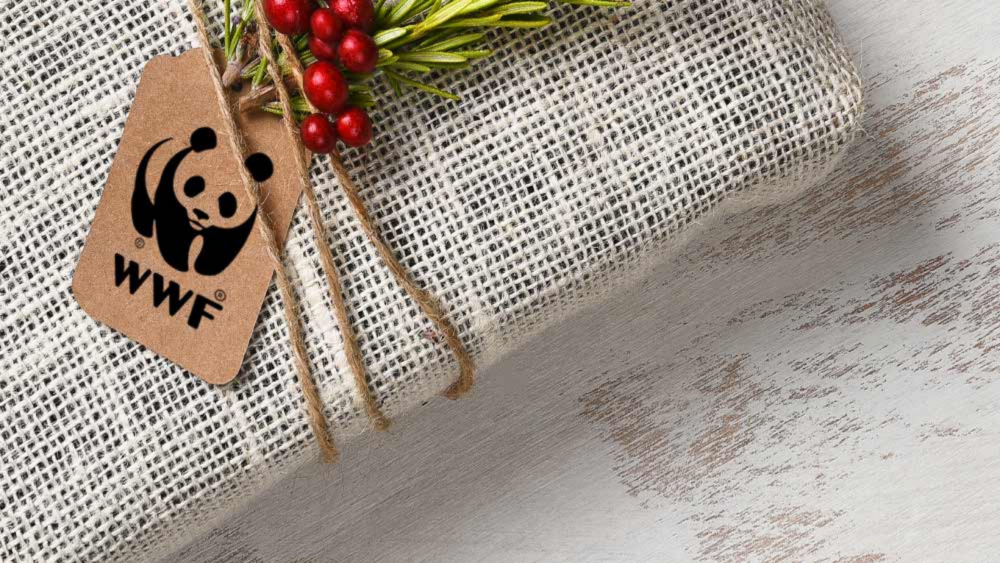PRESENTS
1. Quality not quantity: Buying fewer but better-quality gifts reduces the chances of gifts going to waste and can be better for your wallet too. Why not do a Secret Santa with your friends or family, avoiding novelty gifts that will inevitably get chucked away.
2. Gift an experience: Reduce demand for physical resources by gifting an experience to your loved ones instead. Whether it’s gifting your time or a pre-bought experience, it’s a great opportunity to bring people together.
3. Think about materials: Look at the materials gifts are made from and keep sustainability in mind. Ensure wood and paper are made from recycled or Forest Stewardship Council (FSC) certified materials, avoid single plastics items that can’t be recycled, and look for things like Organic-certified food and clothing. Buying second-hand items like vintage clothes, furniture, and refurbished technology, are also great ways to gift more sustainably as it saves on resources to make new products!

4. Remove packaging: Reduce waste even further by buying gifts with little or no packaging. Sometimes shopping local can help with this, especially if you have a local refill shop. If packaging is unavoidable, opt for something plastic-free or made from recycled, or recyclable, materials. And don’t forget your reusable bags to carry all your shopping home!
5. Test your wrapping skills: Look for cards and wrapping paper made from recycled or FSC-certified paper. Avoid plastic ribbon and tape, and foil-backed papers or those with glitter which aren’t recyclable. There are many tape-free wrapping techniques online to try, or you can try furoshiki, a traditional Japanese method of using cloth to wrap and transport gifts, making for beautiful, unique, and reusable packaging.
FOOD
7. Cut your food waste: Food production is the biggest cause of tropical deforestation. Try to cut any waste by planning ahead - be realistic about how much food you need and use up leftovers. Leftover food may be unavoidable, but you can save it and enjoy it the next day by covering it with eco-friendly cling film, foil or wax cloth covers!
8. Eat More Plants: Eating more plant-based meals is good for you and the planet. The livestock industry alone generates nearly 15% of all man-made greenhouse gas emissions and requires space and huge amounts of water and feed. There are lots of meat alternatives around these days. In fact, this year WWF CEE and Tesco CE joined forces to raise awareness of sustainable eating habits to improve health and mitigate the environmental impact of our food. Lear more about our partnership here.

© Elizabeth Dalziel / WWF-UK
9. Know your logos: When shopping for food, look for local produce to reduce food miles (avoiding food that’s been flown around the world to get here), and sustainability certifications such as RSPO-certified palm oil and MSC-certified seafood*.
10. Eat seasonally: Buying locally-produced products when they're in season can ensure your shopping basket is more sustainable as it reduces the energy that might have been spent growing foods out of season (such as hot-house tomatoes) or food that has been shipped to your country (such as asparagus from Peru in winter).
DECORATIONS
11. Table Manners: Avoid single-use tablecloths and napkins and opt for material versions which have a longer lifecycle than their paper equivalents. When it comes to getting out those stains, washing at lower temperatures helps to reduce your environmental footprint.
12. Think about your lights: Use LED lights on your Christmas tree, they use less energy and look just as good! Also, switch off your lights at night - it's safer and won’t cost the earth.

Image by Jeremy Kyejo from Pixabay
13. Make your own decorations: Rather than buying new, you can upcycle old decorations or sew your own from spare material from around the house.
14. Don’t forget the tree! If buying a plastic Christmas tree, make sure that you’re going to reuse it for at least 10 years, otherwise, it would have been better to buy a living tree from a sustainable forest. If buying a real tree, make sure it’s FSC-certified (responsibly sourced). Be clear on how to dispose of your tree once the season is over – can you turn it into a log pile in your garden? Purchasing a potted tree is also a good solution as you can reuse it each year! Why not got a step further and rent a Christmas tree? Various places let you care for the tree over the festive period and return it to be replanted for use again the next year. If you want to go all the way for a sustainable Christmas celebration, let your imagination run wild - compose a festive tree from a pile of books, outline its siluette with LED lights, or come up with your own creative idea. When having guests at home use the opportunity to share with them your personal motivation to celebrate a green Christmas.
OUT AND ABOUT
15. Dressing for the party season: This year, choose the sustainable option and try to use clothing that you already own! If you really can’t find anything to wear, ask your friends or family, and try looking around second-hand shops for your new Christmas party outfit.
16. Reconnect to nature: The festive season is all about spending time with friends and family. Try making one of your festive activities a walk around your local park or nature reserve. Winter is a great time to spot all sorts of over-wintering birds. Download WWF’s Seek app, which lets you identify and discover more about local species, while also helping scientists to track global biodiversity.

© Diana Rudenko, WWF
* WWF believes the MSC needs to commit to and accelerate key reforms so that it can maintain its reputation as the world’s leading fisheries standard and certification system. Here you can find the full WWF statement on the needed MSC reforms.


